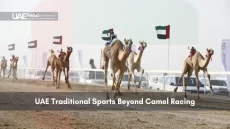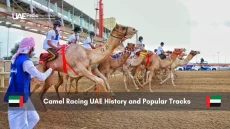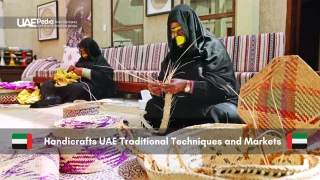Did you know Dubai plans to double its creative workforce to 140,000 by 2025? This bold vision reflects how the nation’s creative industries have become a powerhouse, blending tradition with innovation to shape a globally recognized cultural identity.
From historic exhibitions at the Aga Khan Museum to boundary-pushing partnerships like the Emirati-French Cultural Dialogue, the country has transformed into a stage for world-class creativity. Its strategy? Merging local heritage with global trends—think art festivals that draw millions, media hubs nurturing digital storytellers, and design districts turning skylines into open-air galleries.
What makes this work? A dynamic mix of government vision and grassroots energy. Take the Dubai Creative Economy Strategy, aiming to boost creative GDP contributions through initiatives like twofour54’s media labs or Sharjah’s artist residencies. These efforts don’t just celebrate culture—they fuel economic diversity, with the media and entertainment sector projected to hit $20 billion by 2027.
Key takeaways:
- How strategic investments in art, media, and design create global cultural influence
- The role of public-private partnerships in building creative ecosystems
- Why nurturing home-grown talent matters for long-term economic resilience
Understanding UAE Cultural Development: Foundations and Proven Initiatives
Imagine walking through a 200-year-old fort where pearl divers once planned their voyages—now hosting cutting-edge art installations. This blend of past and present defines the nation’s approach to nurturing creative ecosystems. Let’s unpack how history fuels innovation here.
Threads of Tradition in Modern Canvases
Sharjah’s Maraya Art Centre perfectly embodies this fusion. Once a trading hub, its glass-paneled exterior now reflects exhibitions merging Bedouin poetry with digital projections. Nearby, ancient forts and castles host VR experiences letting you barter spices with 18th-century merchants.
Blueprints for Cultural Momentum
Abu Dhabi’s Department of Culture and Tourism doesn’t just preserve heritage—it reinvents it. Their Creative Visa program attracts global talents, while the Ministry of Culture’s “Sons of the Soil” initiative trains Emirati artists to reinterpret falconry motifs through street art.
Check out how key projects bridge eras:
| Initiative | Location | Impact |
|---|---|---|
| Maraya Art Biennial | Sharjah | Mixes Arabic calligraphy with AI-generated designs |
| Louvre Abu Dhabi Partnerships | Abu Dhabi | Trains conservators in ancient textile restoration |
| Al Ain Oasis Workshops | Al Ain | Teaches pottery using 3,000-year-old techniques |
These policies do more than protect relics—they turn heritage into living labs. When the Ministry of Culture launched its digital archive last year, over 12,000 students contributed family stories. That’s how you build identity: by making history everyone’s project.
Strategic Frameworks and Partnerships in the UAE Cultural Sphere
Picture this: a desert festival where holographic camels race alongside traditional dance troupes, funded equally by tech giants and heritage councils. This blend defines how strategic partnerships shape the nation’s creative landscape today.
The Architects Behind the Curtain
The Ministry of Culture and Department of Culture Tourism don’t just set rules—they build playgrounds. Take their Creative Industries Accelerator, which fast-tracks 120+ projects annually. At Expo 2020 Dubai, their joint pavilion became a launchpad for Emirati filmmakers, with 34% securing global distribution deals.
When Business Meets Brushstrokes
Public-private collaborations turn vision into reality. A hotel chain recently funded art residencies in exchange for lobby installations—smart branding that supports emerging talent. The result? Over 2,000 new work opportunities in the sector last year alone.
Three ways these partnerships thrive:
- Shared funding models (like Dubai Design District’s 50/50 grants)
- Co-created policies ensuring fair artist compensation
- Identity-driven projects celebrating local narratives
The National Strategy for Cultural and Creative Industries isn’t paperwork—it’s a recipe book. When the Department of Culture Tourism partnered with animation studios, they didn’t just make cartoons. They crafted modern folktales now streaming in 19 languages. That’s how you turn sector growth into global conversations.
Innovative Programs and Global Exhibitions Shaping Creative Sectors
What if your next art gallery visit included a holographic Bedouin storyteller? That’s the reality at Abu Dhabi Art’s Future Heritage Pavilion, where ancient pottery shards converse with AI-generated landscapes. This fusion defines how the nation’s creative sector thrives—by turning galleries into global conversation starters.
Art Exhibitions, Heritage Events, and International Dialogues
Sharjah Biennial 15 didn’t just display art—it sparked debates. Last year’s theme, Thinking Historically in the Present, paired Emirati weavers with Brazilian muralists. Their collaborative tapestries now tour 12 countries, proving cultural heritage isn’t static. As curator Hoor Al Qasimi noted:
“We’re not preserving history—we’re co-writing it with the world.”
Check out these trendsetting initiatives:
| Program | Focus | Outcome |
|---|---|---|
| Dubai Design Week | Sustainable Architecture | Launched 45 eco-friendly startups |
| Louvre Abu Dhabi Talks | Arabic Language in Digital Art | 3,000+ multilingual VR experiences created |
| Alserkal Residency | Entrepreneurs in Creative Industries | 85% of participants secured global partnerships |
Boosting Talents, Creativity, and Entrepreneurship in a Global Market
The Ministry of Culture’s Creative Gate program proves local talents can shine worldwide. Last year, 23 Emirati filmmakers premiered at Cannes—their shorts blending falconry symbolism with climate tech narratives. Meanwhile, the Media Zone Authority mentors 500+ content creators annually, focusing on mobile-first storytelling.
Three ways these efforts reshape the sector:
- Hybrid festivals merging live performances with metaverse access
- Seed funding for projects linking national identity with futuristic design
- Co-working spaces where poets brainstorm with AI developers
When the Department of Culture Tourism launched its NFT platform for emerging artists, sales hit $2.4 million in three months. That’s the power of reimagining tradition—one digital brushstroke at a time.
Looking Ahead: The Evolving Future of UAE Cultural Expression
By 2031, every third creative job in Abu Dhabi could be held by someone under 30. This projection from the UAE 2031 vision reveals how strategic initiatives will reshape the arts sector. Think pop-up galleries run by teen entrepreneurs or AI-powered poetry slams in Al Quoz warehouses—this is where tradition meets tomorrow.
Young people already drive 40% of art startups in the country, with programs like Abu Dhabi’s Creative Lab offering seed funding for projects blending Arabic language coding with textile design. Expect more hybrid spaces where calligraphers collaborate with VR developers, supported by policies aiming to double creative economy jobs by 2027.
The numbers tell a story: 500+ cultural events annually, 70% increase in public art installations since 2020, and a goal to rank among the world’s top 10 creative sectors. As one Emirati filmmaker put it: “Our heritage isn’t behind glass—it’s the fuel for what’s next.”
From augmented reality heritage trails to co-working hubs for media innovators, the next decade will prove that culture isn’t just preserved here—it’s prototype.
Through initiatives like the Ministry of Culture and Youth’s heritage programs, the UAE invests in restoring historic sites, digitizing archives, and promoting traditional crafts. Think falaj irrigation systems reborn as UNESCO-recognized landmarks—old soul, new vision.
Creative sectors—film, design, gaming—contribute over 2% to the GDP. Abu Dhabi’s twofour54 media hub and Dubai Design District fuel this growth, offering grants, co-working spaces, and global exposure for entrepreneurs. It’s art meets ambition.
Absolutely! The Louvre Abu Dhabi’s artist residencies and Sharjah Biennial’s open calls attract global talent. Partnerships with local creators often blend Arabic storytelling with cutting-edge tech—like a sand-scripted VR masterpiece.
From Al Ain’s date palm festivals to Dubai’s Sheikh Mohammed Centre for Cultural Understanding, traditions thrive. Even malls host henna corners and oud workshops—heritage isn’t locked in museums; it’s woven into the city’s pulse.
Programs like “Creative Youth” by the Department of Culture and Tourism offer mentorship, funding, and exhibition opportunities. Imagine a 19-year-old Emirati filmmaker premiering at Cannes—supported by homegrown talent pipelines.
Big time. The UAE chairs UNESCO’s Intangible Cultural Heritage Committee and hosts events like the World Art Dubai fair. It’s a crossroads where Bedouin poetry meets AI art—proof that cultures don’t clash, they coffee-chat.

















